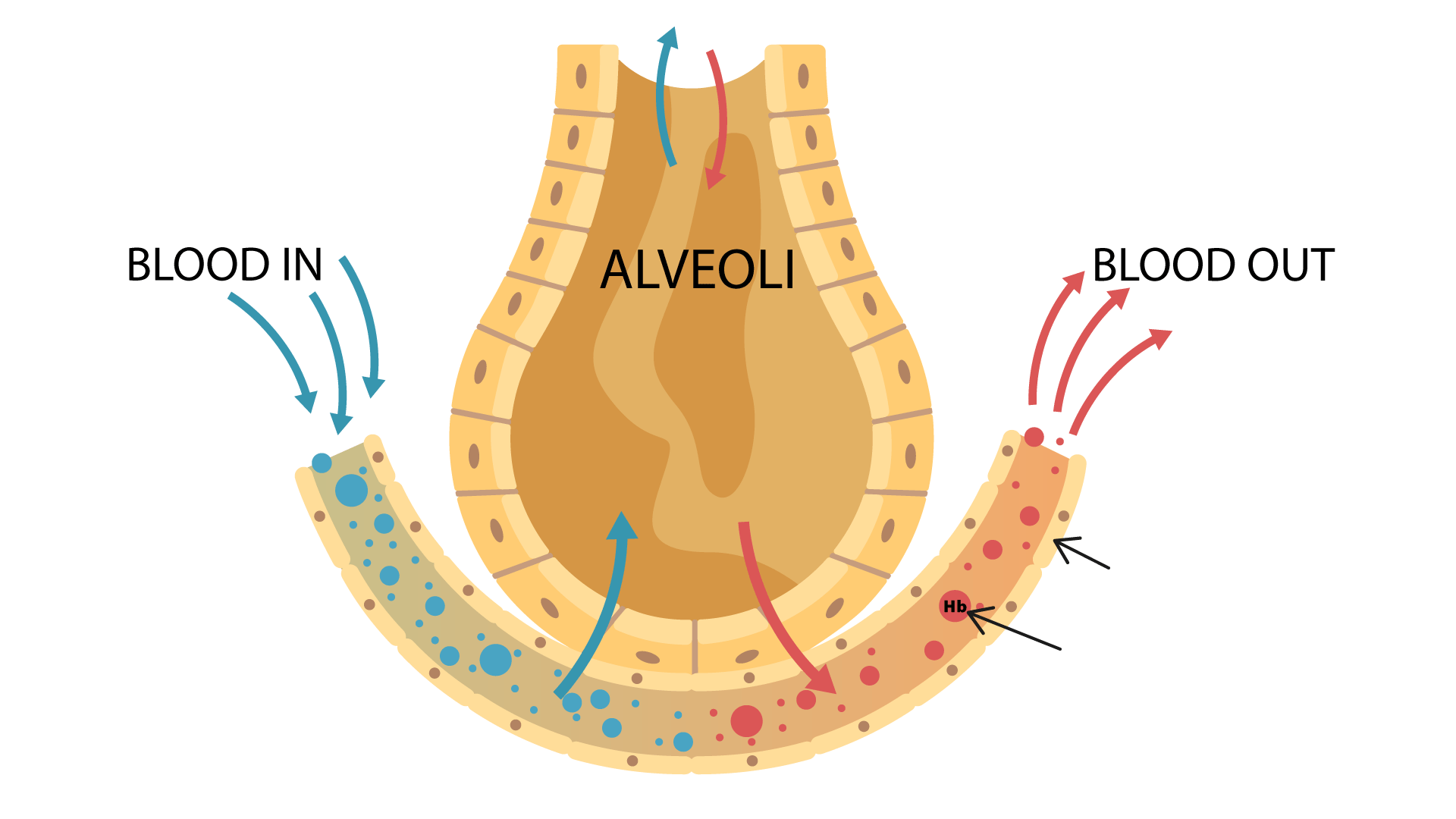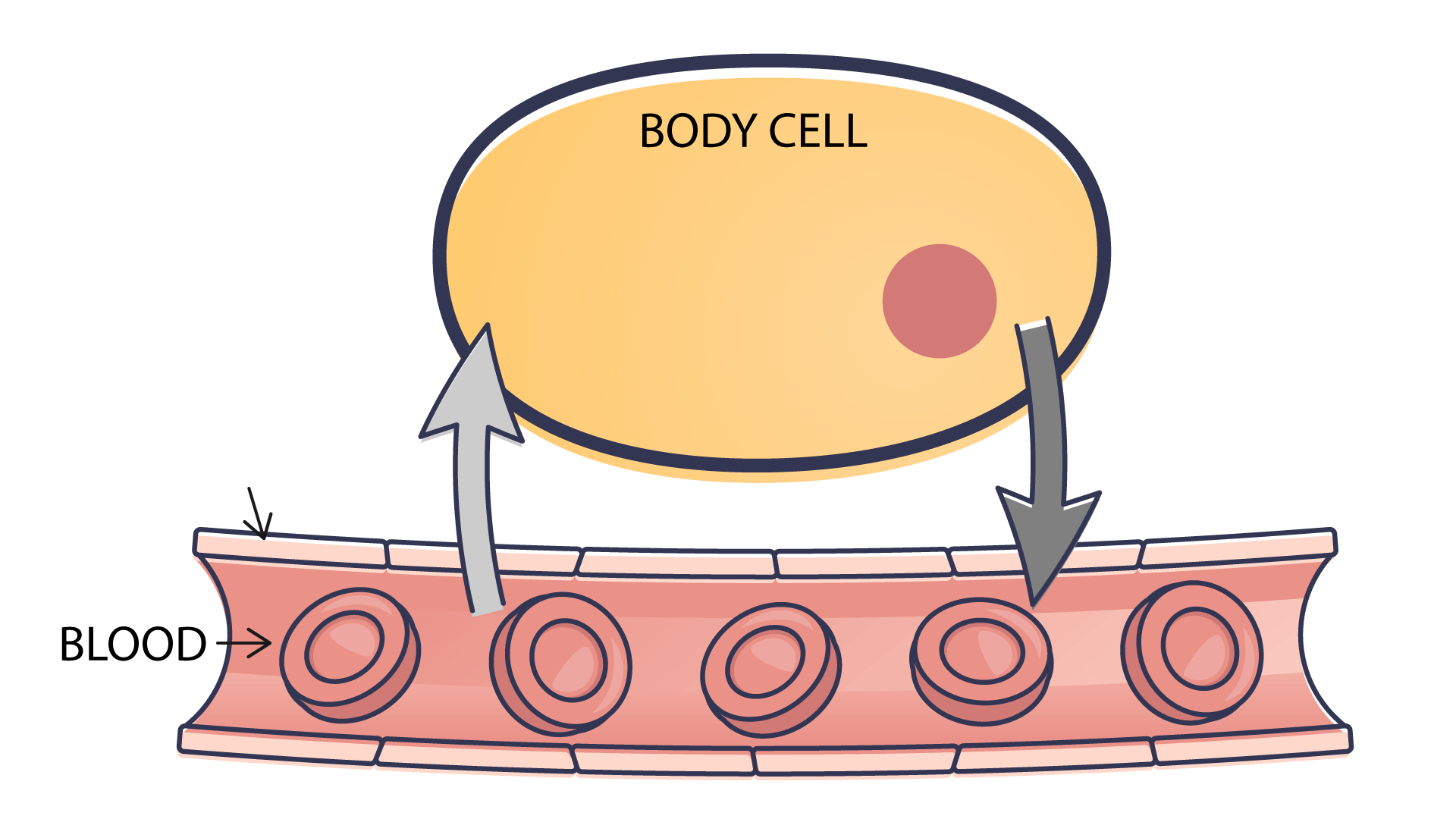Respiratory System: Function
1. Drag and drop to label the direction of gases during gaseous exchange at the lungs.

2. Drag and drop to label the direction of gases during gaseous exchange at working muscles.

3. Using all of the key terms listed below, outline the process of gas exchange that takes place at the alveoli-capillary network. Type your answer in the box then check your answer against the model answer.
Gas exchange is the process by which carbon dioxide enters the lungs to be breathed out and oxygen enters the blood stream to be transported to the working muscles/cells via a process known as diffusion. Diffusion involves the movement of substances from an area of high concentration to lower concentration. The alveoli contain air rich in oxygen (i.e., high concentration of oxygen) whereas the capillaries have a low concentration of oxygen. Therefore, oxygen diffuses from the alveoli into the blood in the capillaries. However, the capillaries contain a high concentration of carbon dioxide whereas the alveoli contain a low concentration of carbon dioxide. Therefore, carbon dioxide diffuses from the blood in the capillaries to the alveoli to be breathed out to the atmosphere.